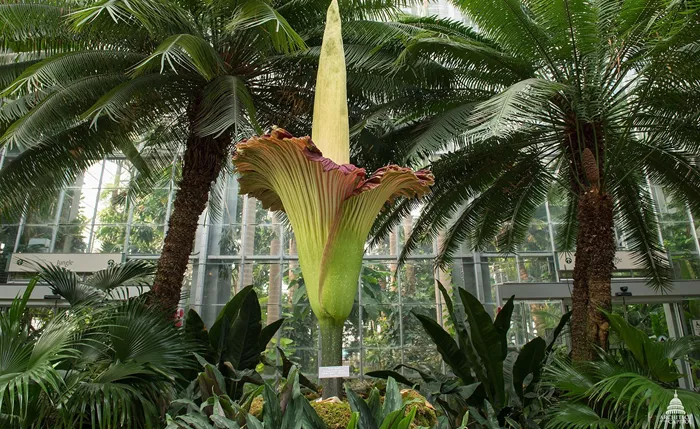The corpse flower (Amorphophallus titanum), renowned for its potent odor mimicking rotting flesh, faces a new challenge in its fight for survival: inadequate historical records. This issue, highlighted by a recent study involving institutions worldwide, reveals a severe lack of standardized data, hindering informed breeding decisions crucial for maintaining genetic diversity.
Native to Sumatra, the corpse flower is already endangered due to habitat destruction, climate change, and invasive species encroachment. The plant’s unique pollination strategy, which involves attracting flies and carrion beetles with its pungent smell, is a clever evolutionary trick but requires precise care in controlled environments. Gardens often host events to showcase the rare bloom, which lasts only 24 to 48 hours.
The study, conducted by scientists from Northwestern University and the Chicago Botanic Garden, analyzed data from nearly 1,200 corpse flowers across 111 institutions. It found that 24% of the plants were clones, and 27% were offspring from closely related individuals, indicating low genetic diversity. This lack of diversity can lead to inbred plants that may not produce sufficient pollen or may die shortly after flowering.
A notable example of the consequences of inbreeding was reported by an institution where all corpse flower offspring were albino, lacking chlorophyll necessary for photosynthesis and thus unable to survive. The study emphasizes the need for consistent, standardized data to ensure the long-term survival of the species.
To address these challenges, researchers recommend documenting plant origins, standardizing data across collections, tracking parent plants, transferring data with plants during relocation, and establishing a common language for recordkeeping. These measures are crucial for maintaining genetic diversity and ensuring the corpse flower’s continued existence in living collections, which are essential for its conservation due to its inability to be stored in seed banks.
In the wild, only about 162 individual corpse flowers remain, underscoring the urgency of improving conservation efforts. By enhancing data management and breeding practices, conservationists hope to eventually reintroduce these plants into their natural habitat, securing their future against extinction.


